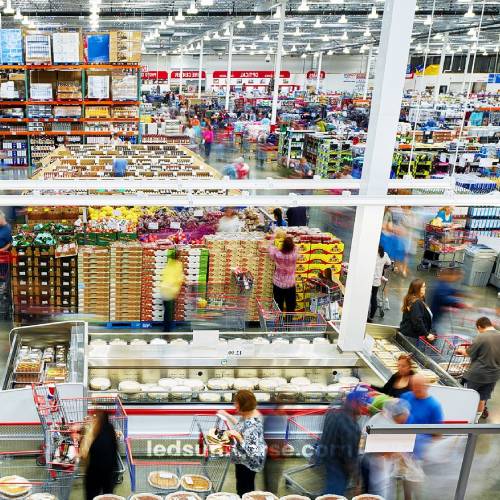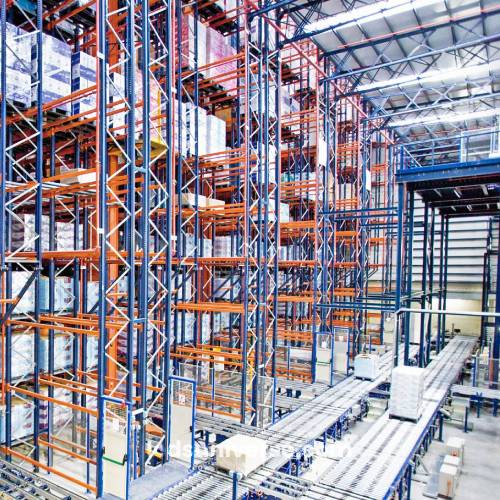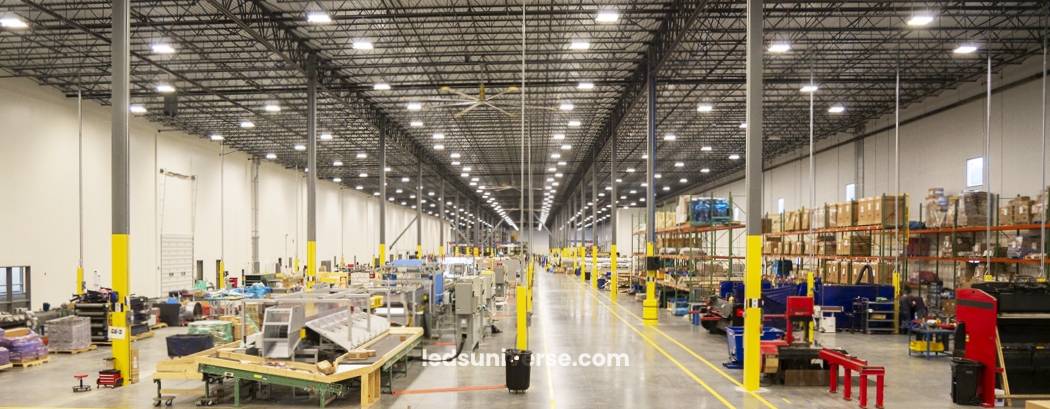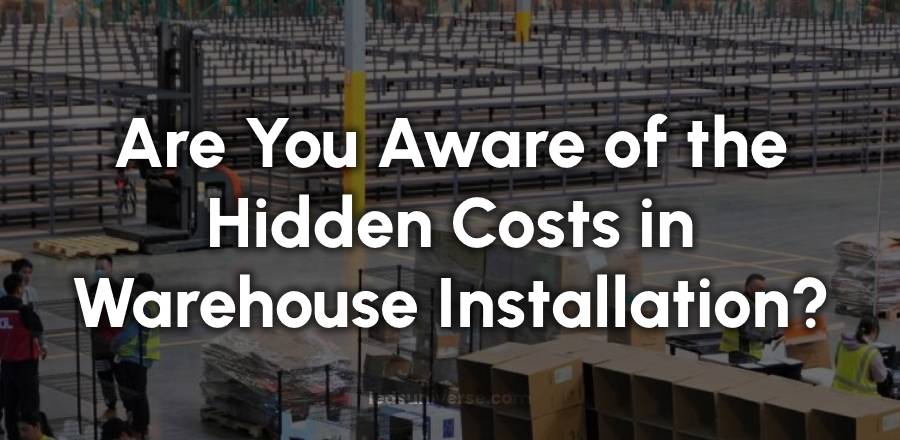When embarking on a warehouse installation project, many businesses focus on the obvious expenses, such as purchasing equipment and renting space. However, various hidden costs can creep in, potentially leading to budget overruns and project delays. A thorough understanding of these hidden expenses can aid in effective budgeting and strategic planning, ultimately contributing to smoother operations and better resource management.
| Cost Category | Description | Estimated Costs |
|---|---|---|
| Planning and Design Costs | Fees for design services and site assessments | $5,000 – $50,000 (design) $2,000 – $10,000 (site assessments) |
| Permits and Regulatory Compliance | Fees for necessary permits and compliance assessments | $3,000 – $15,000 (environmental assessments) $1,000 – $5,000 (zoning approvals) Up to $10,000 (safety inspections) $500+ (fines for non-compliance) |
| Construction and Renovation Expenses | Unforeseen modifications and upgrades | $10,000 – $100,000 (structural modifications) $20,000 (electrical/plumbing upgrades) |
| Equipment and Technology Costs | Costs for essential equipment and software integration | $50,000 – $250,000 (equipment) $10,000 – $50,000 (software integration) $5,000 – $20,000 annually (ongoing costs) |
| Labor Costs: Installation and Training | Installation labor costs and staff training | $15 – $40 per hour (installation labor) $1,000 – $10,000 (training programs) |
| Long-term Maintenance and Upkeep | Ongoing maintenance and repair costs | 2% – 5% of equipment value annually |
| Operational Inefficiencies | Increased costs due to poor design and workflows | 20% – 30% increase in labor costs due to inefficiencies |
Table of Contents
ToggleOverview of Warehouse Installation
Warehouse installation involves the comprehensive setup of various systems and equipment designed to optimize storage and facilitate efficient workflow within a facility. This process typically includes the installation of racking systems, shelving units, and material handling equipment, as well as the integration of technology solutions such as warehouse management systems (WMS). Each component plays a unique role in ensuring that the warehouse operates at its full potential, enabling businesses to manage inventory, streamline order fulfillment, and enhance customer satisfactio
The initial phase of warehouse installation often requires detailed planning and design work to tailor the facility to the specific needs of the business. This may involve engaging with architects or warehouse design specialists who can assess the space, determine the optimal layout, and ensure compliance with safety regulations. Understanding the functionality required from the warehouse will guide decisions about equipment and technology, impacting both the initial setup and long-term operational costs.
As the design phase progresses into actual installation, various logistical challenges can arise. These challenges may involve coordinating with contractors, ensuring timely delivery of equipment, and aligning installation schedules with other operational activities. Delays or disruptions in any of these areas can result in unforeseen costs that stretch the budget beyond the original estimates.
Common Hidden Costs in Warehouse Installation
Numerous hidden costs can surface during warehouse installation, often catching businesses off guard. Many of these costs stem from the complexities involved in designing, building, and equipping a warehouse. Recognizing these potential pitfalls is vital for effective financial planning.
Planning and Design Costs
Planning and design costs can quickly escalate beyond initial estimates. Engaging professional design services often incurs expenses that may not be apparent at first. These specialists provide valuable insights into layout optimization and compliance with regulations, but their fees can vary significantly based on the project’s complexity. Site assessments and evaluations also add to this initial financial burden, as they involve thorough investigations of the location’s suitability for the intended purpose.
Permits and Regulatory Compliance
Obtaining necessary permits and ensuring adherence to local regulations can present additional financial challenges. Depending on the location and the scope of the warehouse installation, various permits may be required, each with its associated fees. Local regulations might necessitate environmental assessments, zoning approvals, or safety inspections, all of which can lead to unexpected expenses. Failure to comply with these regulations can result in costly fines and project delays.
Construction and Renovation Expenses
Construction and renovation costs represent another area where hidden expenses can arise. While businesses may budget for basic construction work, unforeseen structural modifications may be required to accommodate specific equipment or comply with safety standards. Additionally, upgrading electrical and plumbing systems to support new technology can result in substantial costs that were not initially anticipated. Such modifications are often necessary to ensure that the facility meets operational requirements, but they can dramatically increase the overall project cost.
Equipment and Technology Costs
The cost of equipment and technology can also surprise many businesses during the installation process. While companies typically plan for the purchase of essential equipment, additional expenses related to software for inventory management or automated systems integration can arise. As warehouses become more technologically advanced, integrating these systems becomes increasingly critical to maintaining efficient operations. The initial investment in technology may appear manageable, but ongoing costs for software updates, maintenance, and training personnel can add up over time.
Labor Costs: Installation and Ongoing Training
While businesses may account for installation labor, ongoing maintenance and training can create further expenses. Once the installation is complete, staff must be trained to use new systems and equipment effectively. Without adequate training, productivity can suffer, leading to operational inefficiencies that result in lost revenue.
Long-term Maintenance and Upkeep
Long-term costs should also be considered when evaluating hidden expenses in warehouse installation. Maintenance and upkeep of equipment are ongoing financial commitments that can be easy to overlook. Regular inspections, repairs, and eventual replacement of outdated systems all contribute to the total cost of ownership for warehouse operations. Setting aside funds for these expenses is vital for maintaining operational efficiency and avoiding budget shortfalls in the future.
Operational Inefficiencies and Their Costs
Operational inefficiencies can arise due to poor design or inadequate equipment, resulting in higher costs over time. A facility that is not optimally designed can lead to wasted space, longer picking times, and increased labor costs. These inefficiencies not only affect the bottom line but can also impact customer satisfaction and overall business performance. Addressing these inefficiencies through thoughtful design and investment in quality equipment can mitigate these long-term expenses.
Strategies to Mitigate Hidden Costs
Mitigating hidden costs in warehouse installation requires a proactive approach that includes comprehensive planning, expert consultation, and a focus on long-term operational efficiency. Implementing effective strategies can help businesses manage their budgets and avoid the pitfalls associated with unexpected expenses.
Comprehensive Planning and Budgeting
Comprehensive planning and budgeting serve as the foundation for successful warehouse installation. Establishing a clear understanding of operational needs, space requirements, and budget constraints enables businesses to make informed decisions throughout the process. Developing a detailed project timeline and assigning responsibilities can facilitate smoother communication among stakeholders, helping to ensure that everyone is aligned on expectations and deadlines.
Seeking Expert Consultation
Seeking expert consultation can prove invaluable when navigating the complexities of warehouse installation. Engaging professionals with experience in warehouse design, equipment selection, and regulatory compliance can help identify potential hidden costs early in the process. Their insights can guide businesses in making strategic decisions that optimize efficiency and minimize expenses, ultimately saving time and resources.
Employee Training and Education
Ensuring that employees are well-versed in the use of new systems and equipment enhances productivity and reduces the likelihood of errors that can lead to increased costs. Investing in training programs and ongoing education demonstrates a commitment to continuous improvement and positions the warehouse for long-term success.
Investing in Quality Equipment
Investing in quality equipment from the outset can mitigate long-term costs associated with maintenance and replacements. While higher upfront costs may deter some businesses, the potential savings from reduced repair expenses and increased efficiency often outweigh the initial investment. Choosing reliable and durable equipment contributes to a more stable operational environment, helping to avoid the pitfalls associated with frequent replacements and repairs.
Exploring Technological Solutions
Additionally, exploring technological solutions that enhance warehouse operations can lead to long-term cost savings. Implementing warehouse management systems and automation can streamline processes, reduce labor costs, and enhance inventory accuracy. While the initial investment in technology may appear daunting, the potential benefits in terms of efficiency and accuracy can lead to improved customer satisfaction and profitability over time.
Regular Assessments and Evaluations
Conducting regular assessments of the warehouse’s design and operations can help identify areas for improvement and efficiency gains. Periodic evaluations of layout, equipment utilization, and workflow processes can uncover hidden inefficiencies and provide opportunities for optimization. By addressing these areas proactively, businesses can ensure that their warehouse remains adaptable to changing needs while keeping operational costs in check.
Fostering Open Communication
Encouraging open communication among team members throughout the installation process is vital for identifying potential issues early on. Facilitating discussions about challenges, concerns, and ideas can foster a collaborative atmosphere that encourages innovative solutions. Engaging employees in the decision-making process creates a sense of ownership and can lead to more effective problem-solving and cost-saving measures.
Designing for Future Growth
Designing the warehouse to accommodate future growth and expansion can prevent costly renovations or equipment replacements down the line. Planning for scalability involves anticipating changes in inventory levels, order volumes, and operational requirements, allowing businesses to adapt without incurring significant additional expenses.
Taking a Holistic View of Operations
Taking a holistic view of warehouse operations can help businesses identify potential cost-saving opportunities that extend beyond the installation phase. By evaluating the entire supply chain and identifying areas where improvements can be made, companies can enhance efficiency and reduce operational costs. This comprehensive approach ensures that the warehouse functions effectively within the larger context of the business, aligning with overall goals and objectives.
Commitment to Continuous Improvement
Implementing strategies to mitigate hidden costs requires a combination of thorough planning, expert consultation, and a commitment to continuous improvement. By fostering a culture of efficiency and innovation, companies can navigate the complexities of warehouse installation and build a strong foundation for long-term success. As the landscape of warehousing and logistics continues to evolve, businesses that remain adaptable and proactive will be best positioned to thrive in a competitive marketplace.

The Role of Technology in Identifying Hidden Costs
Advanced software solutions and analytical tools can provide insights that traditional methods may overlook. By leveraging technology, businesses can gain a clearer understanding of their operations, ultimately leading to more informed decision-making.
Warehouse Management Systems (WMS) are a example of how technology can enhance efficiency and reduce costs. A WMS provides real-time data on inventory levels, order processing, and equipment utilization. By analyzing this data, businesses can identify bottlenecks in their operations and address issues that may lead to hidden costs. For example, if a WMS reveals that a particular section of the warehouse consistently experiences delays in order picking, businesses can reassess their layout and equipment allocation to optimize that area.
Moreover, utilizing data analytics can uncover patterns and trends that might not be immediately visible. By analyzing historical data on labor costs, equipment failures, and maintenance schedules, businesses can make proactive adjustments to their operations. For instance, if data indicates that certain equipment frequently requires repairs, a company might consider replacing it with a more reliable option before it becomes a larger financial burden.
Implementing automation technologies can also reduce labor costs and enhance efficiency in warehouse operations. Automated storage and retrieval systems (AS/RS), conveyor systems, and robotic picking systems can significantly decrease the time required for various tasks. While the initial investment in automation may seem daunting, the long-term savings generated from reduced labor costs and increased accuracy often justify the expenditure.
The Importance of Flexibility in Design
Another critical aspect of warehouse installation is the need for flexibility in design. The logistics landscape is continually changing due to factors such as consumer demand, technological advancements, and economic fluctuations. A rigid warehouse design can become outdated quickly, leading to inefficiencies and increased costs.
Designing a warehouse with flexibility in mind allows for easier modifications in response to changing needs. For example, incorporating adjustable racking systems enables businesses to alter storage configurations without significant additional investments. This adaptability can help organizations respond to fluctuations in inventory levels or changes in product lines without incurring substantial costs.
Moreover, flexibility in design can enhance employee satisfaction and productivity. A well-thought-out layout that allows for easy navigation and efficient workflows can improve morale and reduce frustration among staff. Engaged employees are more likely to contribute to operational efficiencies, leading to cost savings over time.
Regular Maintenance as a Cost-Saving Measure
In addition to upfront costs, ongoing maintenance of warehouse equipment and infrastructure can help prevent hidden expenses from arising in the future. Establishing a proactive maintenance schedule for equipment, including regular inspections and servicing, can help identify potential issues before they escalate into costly repairs or replacements.
Preventative maintenance can extend the lifespan of equipment and minimize downtime, which can be particularly costly in a busy warehouse environment. By investing in regular upkeep, businesses can avoid the expenses associated with emergency repairs, which are often significantly higher than routine maintenance costs.
Additionally, training employees on proper equipment usage and maintenance protocols can contribute to cost savings. When staff members understand how to operate equipment safely and efficiently, the risk of damage or accidents decreases. This knowledge can also foster a culture of responsibility and care for the equipment, further reducing long-term costs.
Evaluating Supplier Relationships
The choice of suppliers for equipment and services also plays a role in the overall costs associated with warehouse installation. Establishing strong relationships with reliable suppliers can help mitigate hidden costs in several ways. Trusted suppliers often provide better warranties, more responsive customer service, and ongoing support, which can all contribute to smoother operations.
In some cases, it may be beneficial to explore multiple suppliers and obtain quotes for equipment and services. Comparing options can reveal significant price differences, helping businesses make informed decisions that align with their budgetary constraints. Additionally, establishing long-term partnerships with suppliers may lead to discounts or favorable terms that can further reduce costs.
Negotiating contracts with suppliers to include maintenance agreements or service packages can also help manage long-term expenses. By having a clear understanding of ongoing costs associated with equipment and services, businesses can budget more effectively and avoid unexpected expenses down the line.
Continuous Improvement and Adaptation
Finally, fostering a culture of continuous improvement within the warehouse environment can significantly contribute to reducing hidden costs. Encouraging employees to identify inefficiencies and propose solutions creates an atmosphere of collaboration and innovation. Regular feedback sessions and performance evaluations can help identify areas where improvements can be made.
Implementing employee suggestions not only enhances operational efficiency but also empowers the workforce. Engaged employees who feel their contributions are valued are more likely to take ownership of their roles, leading to higher productivity and reduced costs.
Incorporating regular performance metrics and key performance indicators (KPIs) into warehouse operations can also drive continuous improvement. By measuring various aspects of the operation, such as order accuracy, picking times, and inventory turnover, businesses can identify trends and adjust their strategies accordingly.
Embracing a Holistic Approach to Warehouse Management
Taking a holistic approach to warehouse management can help businesses uncover hidden costs and streamline operations. This involves considering every aspect of warehouse performance, from layout and design to technology and employee training. By recognizing the interconnectedness of these factors, organizations can develop strategies that address multiple areas of their operations simultaneously.
For instance, integrating a robust WMS with employee training programs can enhance inventory accuracy and reduce labor costs. Similarly, designing a flexible layout that accommodates automation can lead to increased efficiency and decreased operational costs.
Conclusion
Navigating the complexities of warehouse installation requires a comprehensive understanding of potential hidden costs and a proactive approach to management. By recognizing the various expenses that can arise during installation, from planning and design to ongoing maintenance, businesses can effectively budget and strategize their operations.
Embracing technology, fostering flexibility in design, and committing to continuous improvement can all contribute to optimizing warehouse performance and minimizing costs. As businesses prepare for the future of logistics, adapting to emerging trends and innovations will be key to maintaining a competitive edge.
By prioritizing cost management and efficiency throughout the warehouse installation process, organizations can position themselves for long-term success in an ever-changing market.
